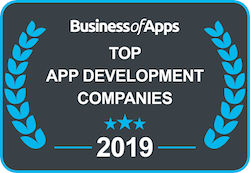
Where is my money going?
Creating visibility for donors by bridging the information gap
Nonprofits rely on donations to provide aid to victims or fund activities, yet there is a lack of visibility or an information gap between those who donate to organisations and the recipients of the aid. The information gap obscures transparency as donors cannot see directly where their donations are headed creating scepticism amongst donors, leading to an unfortunate decline in support and donations.
“If I can see how far away my Uber is, why can’t I see where my charity donation is going?” – Little Phil, Philanthropist
A mobile app could offer donors the chance to access far more in-depth detail of where their donations are headed. For example, an app could offer users the ability to make personalised donations and receive feedback on their generosity in the form of success stories and news in near real-time. Nonprofit organisations have already benefited from implementing a mobile-first strategy. Buengo, for example, acts as a middle man between charities and donors allowing users to choose whether to volunteer, or buy, sell and swap items for free via the app’s ‘marketplace’. Users can donate items to a cause of their choice, and choose the value of the item they are ‘selling for good’ facilitating visibility and creating a far more personalised donor experience.
Even better perhaps, are nonprofits that have developed a mobile app that enables donors to empathise with the recipients of the aid. With the implementation of a ‘news’ functionality donors can see specifically where their money is going by gaining a deeper insight into the people who receive them. Red C partnered with the UNHRC to develop an app that raises awareness of the millions of people forced to flee their homes around the world, the app forces users to face the same life-changing decisions refugees make in a true-to-life quest to try to survive and reach safety. Users gain a far more immersive and authentic experience and thus a greater understanding of where their donations are going, and the type of people the UNHRC helps. Publicly the app was very well received, specifically for its ability to effectively raise awareness giving ‘the viewer [an] insight into the [victim’s] tragedy.’- FeedMyApp.
“We all have iPhones and this is a tool capable of many wonderful things, let’s come together and take action.” – UNHCR app user
That’s the thing; we all have smartphones, and the development of nonprofit mobile apps can increase support, advocacy and donations by reaching a wider, digital demographic.

Are nonprofits reaching a younger demographic?
Digitising donations in a digital age
According to a recent study; 72% of 18-25-year-olds would donate to a charity via a mobile app if given the chance, favouring digital payments as opposed to traditional payment methods. In light of this, it is surprising that only 25% of charities who have developed mobile apps accept digital donations.
With mobile phone usage reaching a record high amongst Millennials and Generation Z, non-profit organisations such as Buengo and the UNWFP (United Nations World Food Programme) are benefiting from mobile apps that simplify the donation process and make volunteering and fundraising activities far more accessible to a younger demographic of donors. The UNFWP’s recently established app ShareTheMeal has accumulated over 34,981,020 meals since its creation in 2018, resulting in ‘1 meal every 3 seconds’, a ‘world-changing’ effort to combat global hunger. The mobile app runs on digital donations which translates into a meal for a child. Digitised donations enable transparency as the user can select where they want to help, choosing between multiple countries by swiping to the left on the bottom of the home screen. The UNWFP believe that Generation Z will be the generation that ends global hunger, and with such a huge increase in donations via their ShareTheMeal app, maybe they’re right?
.jpg)
Are nonprofit services accessible to all?
Enhancing accessibility for your recipients
Are victims or those in need of support and advice able to access your organisation’s services easily? Are your processes discreet, putting those who are embarrassed to ask for help at ease?
A pressing issue for non-profit organisations is ensuring that they are visible and accessible to all victims and those seeking advice. In the digital age, a mobile app is an effective solution to such a problem providing end users with an easy, efficient and confidential way to receive direct help. An example of a nonprofit that has enhanced visibility for people seeking advice by adopting a mobile-first strategy is ChildLine. Their app For Me enables end users to access self-help advice and support, as well as the option to create a mood tracker, chat to other young people and conduct a direct call with a Childline counsellor. These features not only provide a direct link to counsel but, a discreet one, encouraging those in need of help to reach out. Having a mobile app increases the likelihood that people searching for help will come forward as an app offers a quick, accessible and confidential mode of seeking support.

Today, the human experience is a digital experience. Thus, mobile apps have a powerful capacity to transform the way nonprofits operate. Apps will increase visibility by enabling donors to see exactly where their money is going, appealing to a younger demographic of Gen Z users who expect the highest standards of efficiency and accessibility when they engage with brands, companies and organisations. Most importantly, apps can ensure that help and advice is accessible to all, encouraging people to come forward with the promise of receiving direct and instantaneous support.
Could any of your recipients benefit from the technology a mobile app can provide? For example, Augmented Reality (AR) can be integrated into an app to help blind people navigate their way around a room.
Red C would love to discuss how we could help your organisation enhance its services and increase visibility, accessibility and donations.
Email for enquiry: georgia@red-c.co.uk



